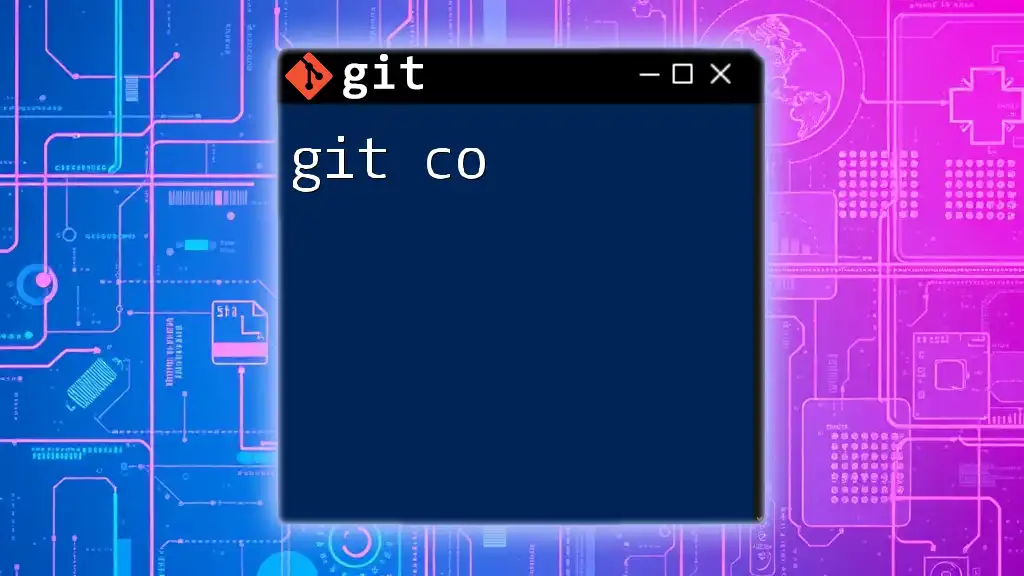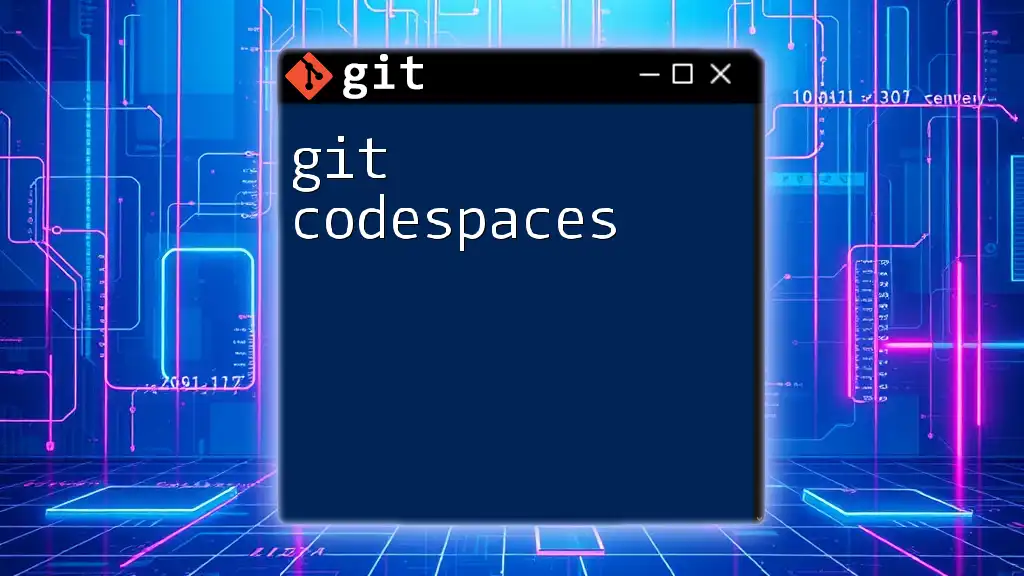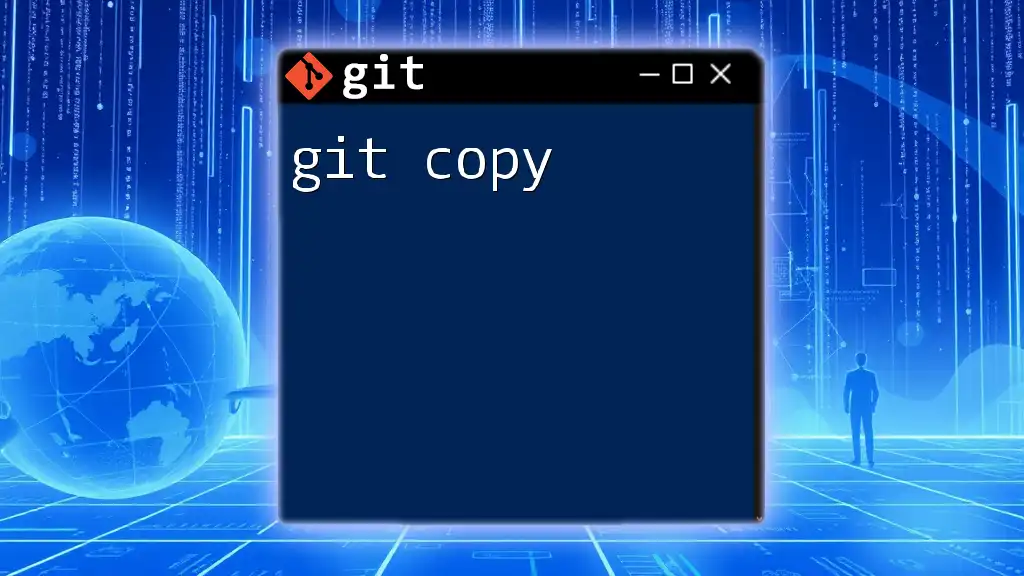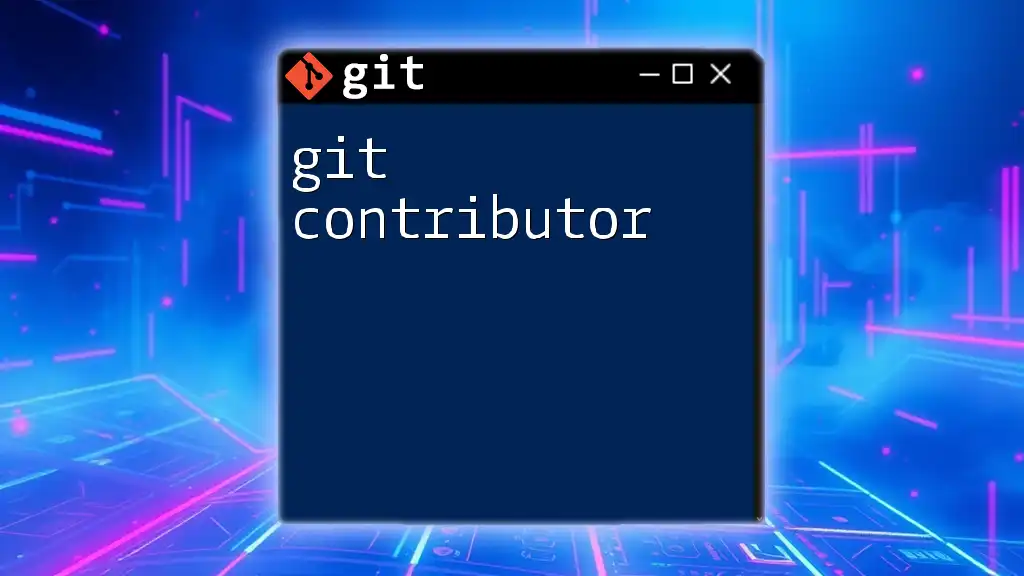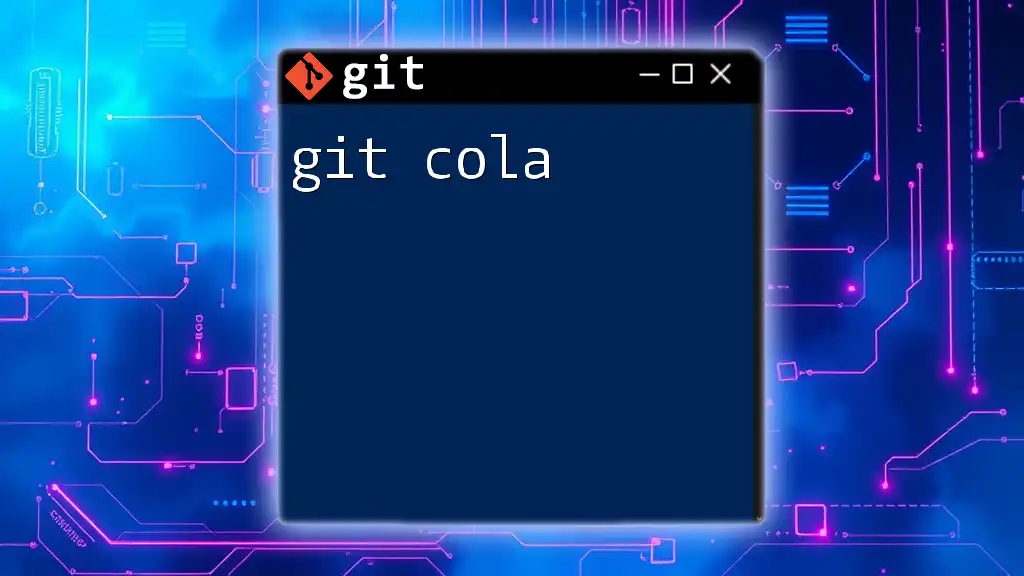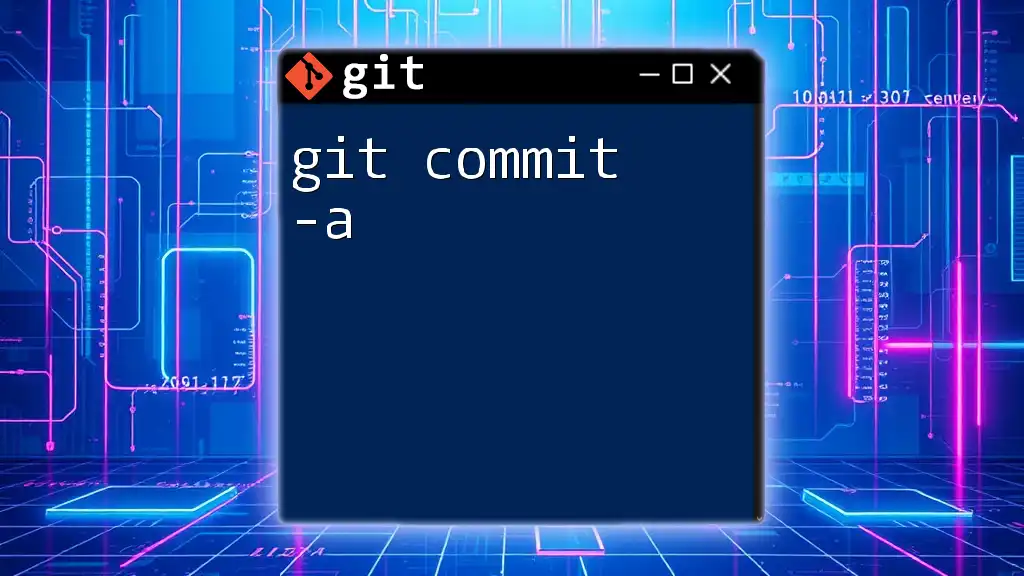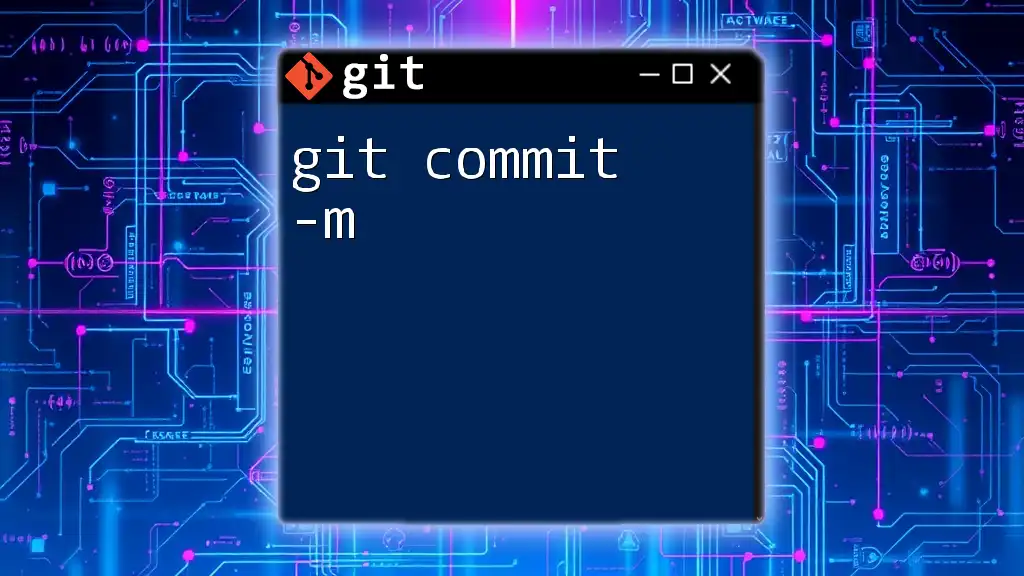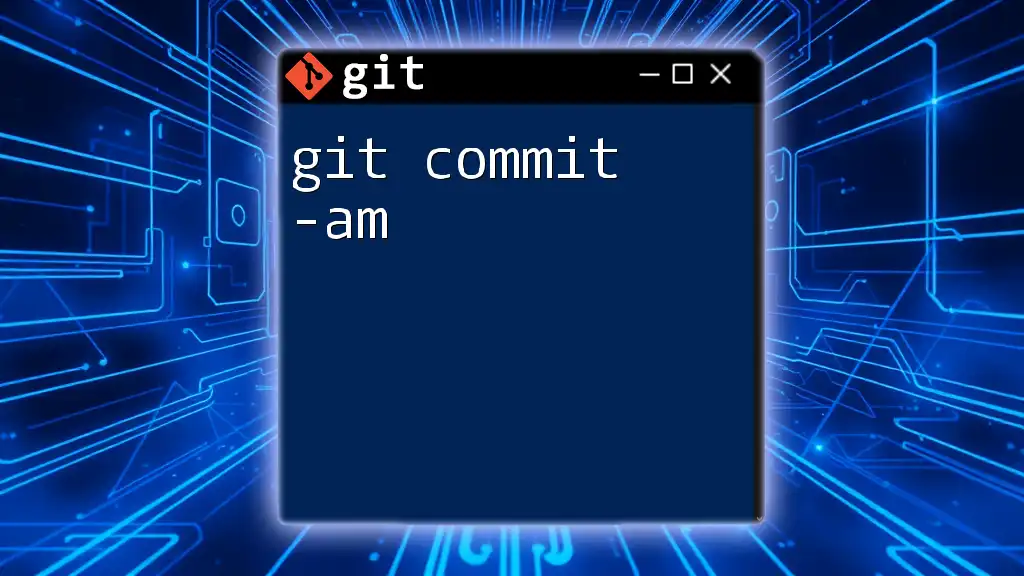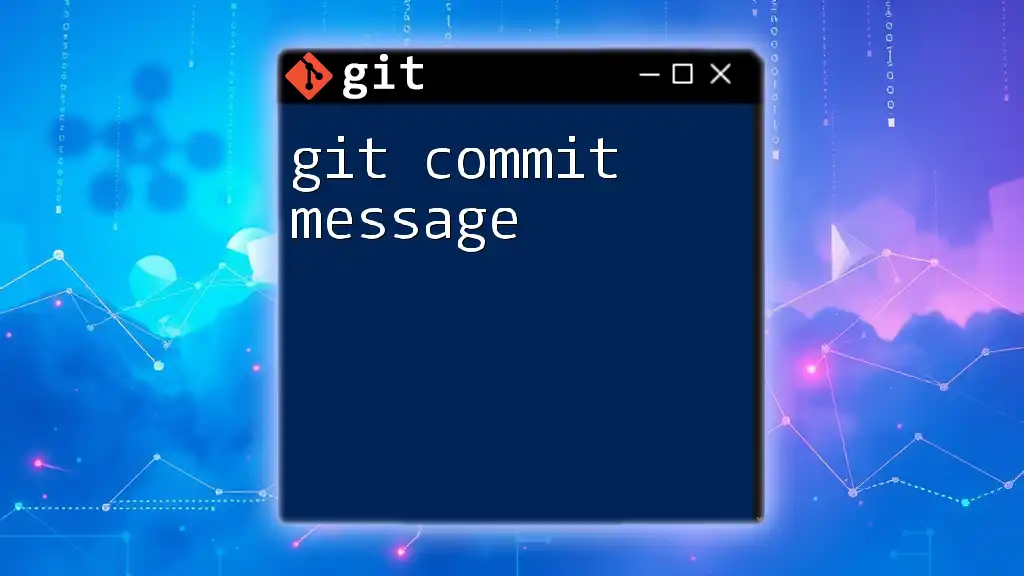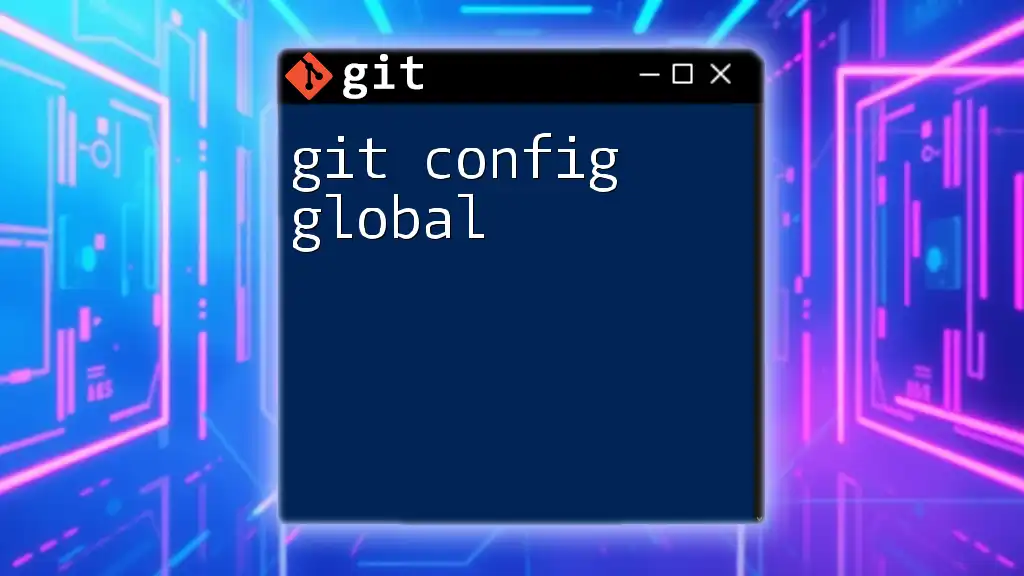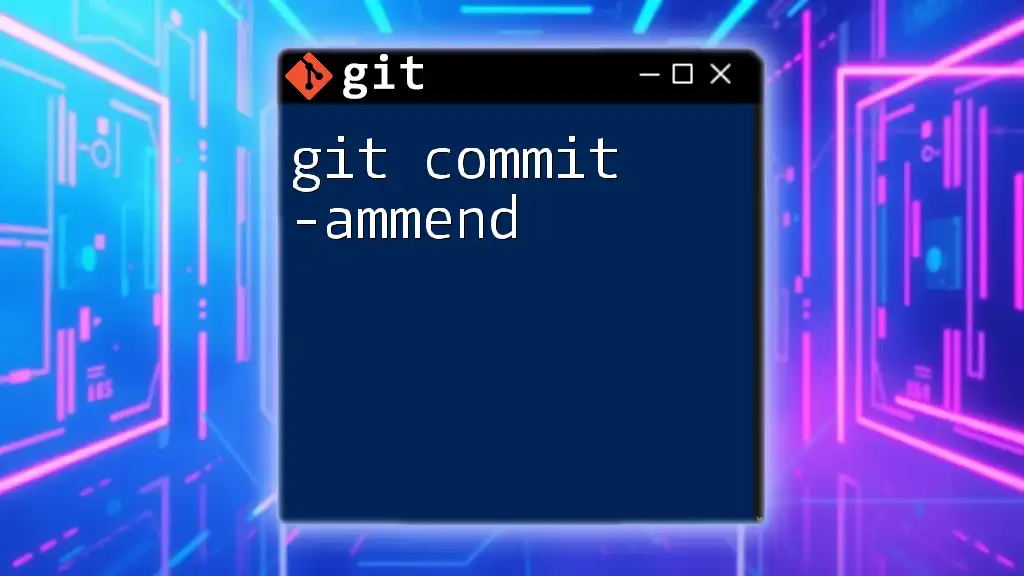The command `git co` is a shorthand alias for `git checkout`, which allows you to switch branches or restore working tree files in a Git repository.
git co <branch-name>
Understanding `git co`
What is `git co`?
`git co` is a shorthand command that serves as an alias for `git checkout`. It acts as an essential tool in your Git workflow, simplifying the process of switching between branches, creating new branches, and restoring file changes. Mastering `git co` can enhance your productivity significantly, allowing you to spend less time typing and more time coding.
Setting Up the `git co` Alias
To make use of `git co`, you first need to set up the alias. This can streamline your experience with Git commands. To create the alias, execute the following command in your terminal:
git config --global alias.co checkout
This command configures Git globally to recognize `git co` as `git checkout`, making it available across all your repositories. To verify that the alias has been successfully set, you can run:
git config --get alias.co
This should return `checkout`, confirming that your alias is correctly configured.
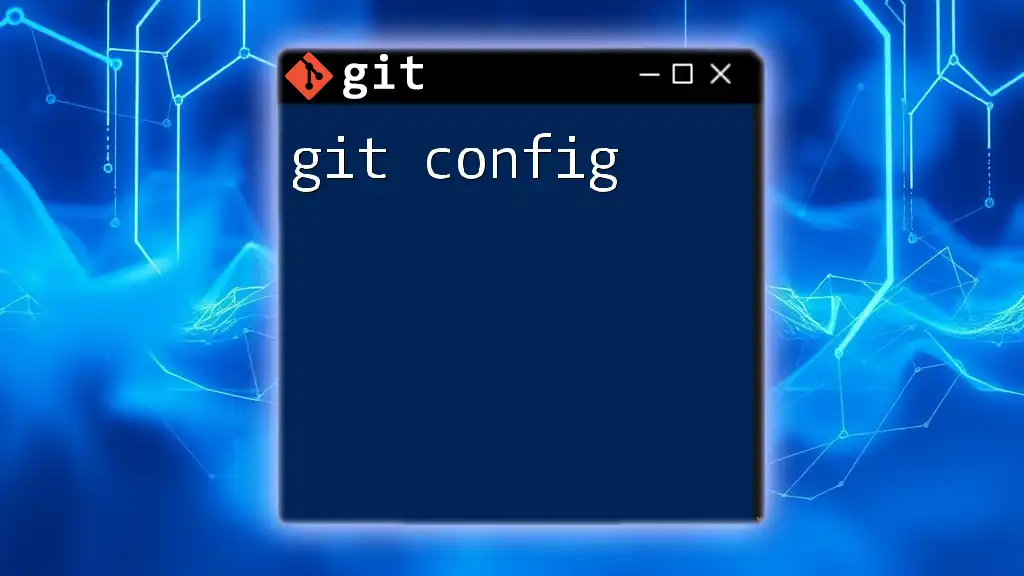
Common Uses of `git co`
Checking Out Branches
Switching Branches with `git co`
One of the primary uses of `git co` is to switch between branches in your project. This can be done easily with the following command:
git co branch-name
For example, if you want to switch to a branch called `develop`, simply run:
git co develop
This command checks out the `develop` branch, making it the active branch in your workspace.
Example Scenario
Imagine you're working on a feature in a branch named `feature/login`. When it’s time to integrate your changes, you need to switch to the `develop` branch to merge your feature. Using `git co` allows you to do this efficiently, saving you time and potential error.
Creating New Branches
Creating a New Branch using `git co`
You can also create a new branch and switch to it using the `-b` option. This combines two steps into one command:
git co -b new-branch-name
For instance, if you want to create a new branch called `feature/signup`, just run:
git co -b feature/signup
This will create and switch to the new branch, allowing you to start your work immediately.
Example
Consider you’re tasked with developing a new feature for user registration. By simply executing the above command, you establish a focused environment for your new feature without affecting the main codebase.
Checking Out File Changes
Using `git co` to Restore Files
Another important feature of `git co` is the ability to restore specific files. This can be particularly useful if you have made changes to a file and want to revert it back to its previous state. You can execute the following:
git co -- path/to/file
For example, if you have edited `index.html` but want to discard those changes, you can restore it to the last committed version with:
git co -- index.html
This command helps prevent unwanted changes from being committed.
Real-World Example
Imagine you’re mid-development and accidentally made several unintentional edits to `config.js`. Upon realizing this, you can restore the file with `git co`, enabling you to return to a stable version and continue with other tasks without having to worry about rolling back commits.
Checking Out Specific Commits
Checkout by Commit Hash
You can use `git co` to checkout previous versions of your project by specifying the commit hash. This allows you to investigate past implementations or fix issues that were present in earlier versions. The command looks like this:
git co commit-hash
For example, if you want to check out a commit with the hash `abc123`, you can do so with:
git co abc123
Implications of Checkout
It's essential to note that checking out a specific commit puts you in a detached HEAD state. This means that you are no longer on a branch, and any new commits will not be associated with any branch until you create and switch to a new one.
Example Explanation
Suppose you need to inspect a bug that existed two commits ago. By checking out the commit, you'll have the entire project as it existed at that time. This can significantly help in understanding why a specific issue occurred, allowing for better debugging and solutions.
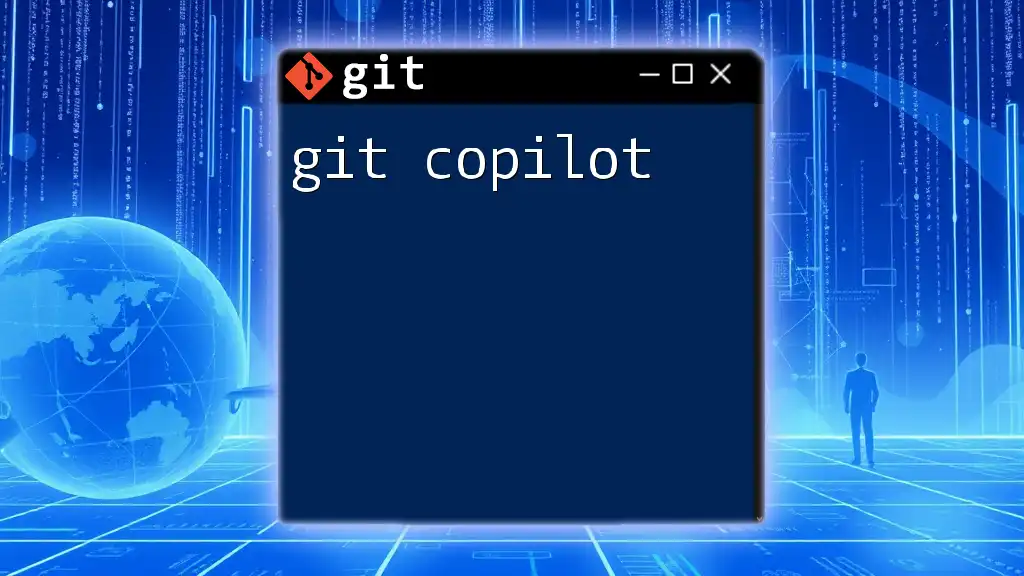
Best Practices for Using `git co`
Avoiding Detached HEADs
What is a Detached HEAD?
A detached HEAD state occurs when you checkout a specific commit rather than a branch. This can lead to confusion if you forget to switch back to a branch before making new changes, as those changes could get lost if you switch branches again. Always ensure you are aware of your current state using `git status`.
Alternative Commands
Using `git switch` instead of `git co`
In newer versions of Git, the `git switch` command has been introduced as a more intuitive way to switch branches. It separates the checkout operation into more user-friendly commands, making it easier for newcomers.
To switch branches, for example, use:
git switch branch-name
Comparative Examples
While `git co` provides quick access to basic checkout functionality, `git switch` is more explicit in its intent and may be preferable for those learning Git. For example:
git switch -b new-feature
This clearly establishes that you are creating and switching to a new branch, enhancing the clarity of your commands.
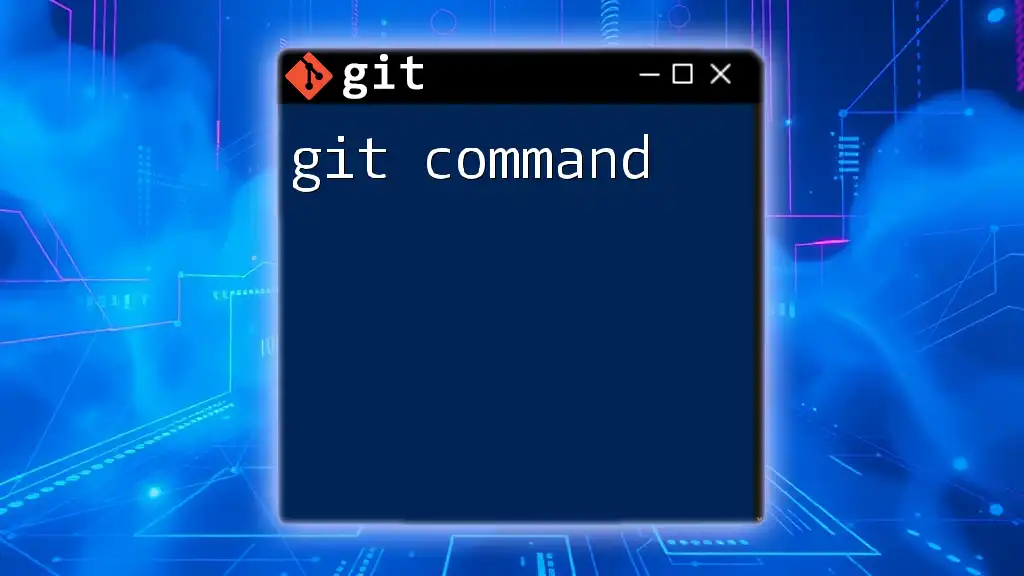
Troubleshooting Common Issues
Common Errors with `git co`
When using `git co`, you might encounter errors such as “pathspec '<branch-name>' did not match any file(s) known to git.” This typically means the branch does not exist or is misspelled. Always confirm the branch name beforehand using:
git branch
Maintaining Branches
If a branch doesn’t appear when you attempt to switch, it could mean it hasn't been created yet or hasn’t been pushed to the remote repository. Use `git branch -a` to see all local and remote branches, which can provide clarity.
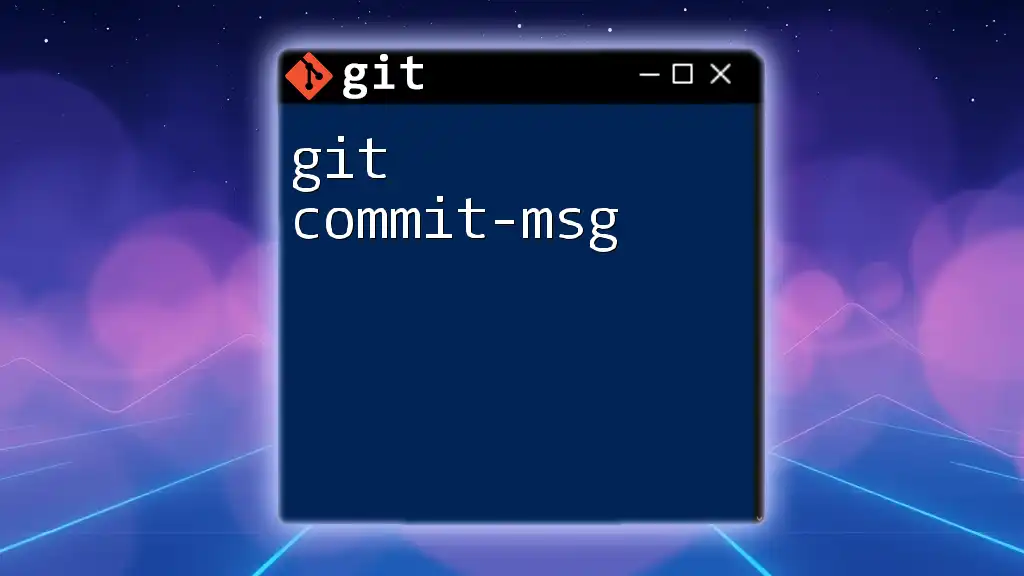
Conclusion
By utilizing `git co`, you can efficiently manage your branches and file versions, significantly streamlining your workflow. This powerful command is vital for anyone seeking to enhance their version control practices. Remember that mastering Git commands, including the `git co` alias, opens new doors for collaboration, productivity, and effective software development.
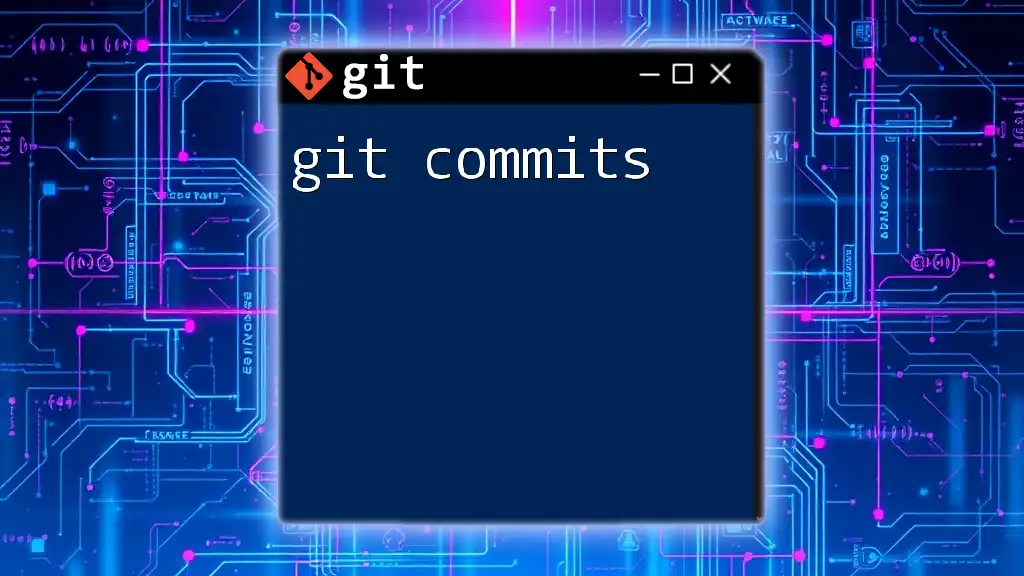
Call to Action
Ready to deepen your understanding of Git commands? Join our courses that focus on practical, concise methods to master Git, improve your collaboration skills, and increase your productivity as a developer. Experience the benefits of streamlined version control today!

